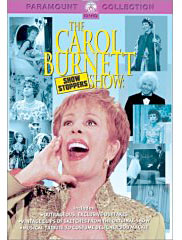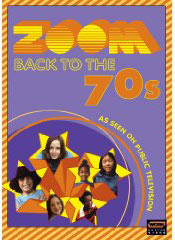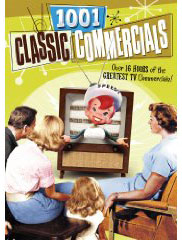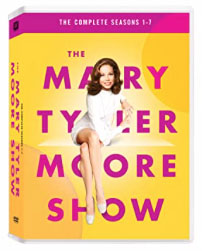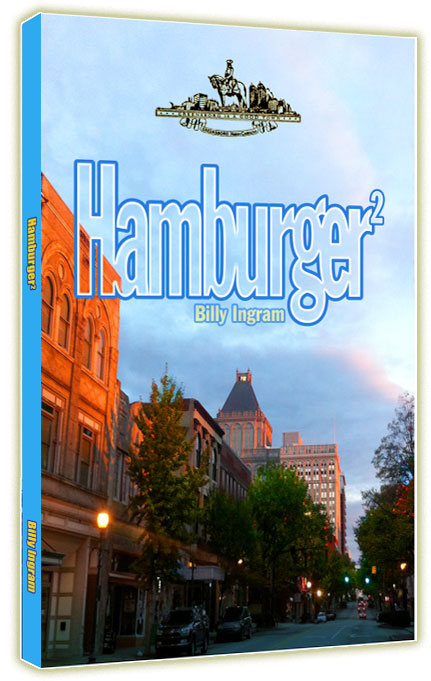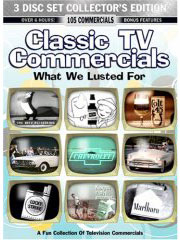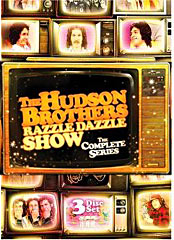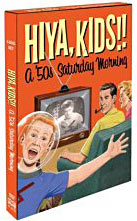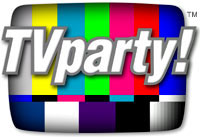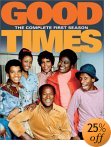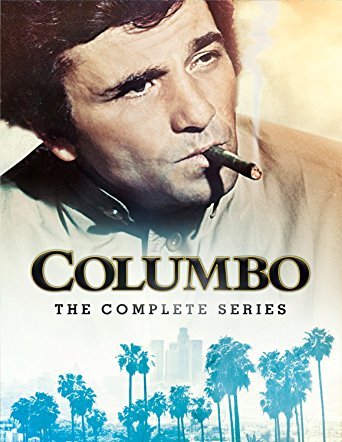 |
|
 |
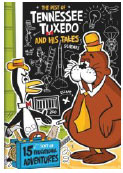 |
 |
||
|
PR4 & PR5 Pages for ads - CHEAP!
TV on DVD
1970's
TV shows on DVD
|
"1971:
TV's Greatest Fall Season"
Every late summer and early autumn for decades the networks have tried to convince viewers that this year, they'll really see something new, exciting and special on their lineups. This, of course, is rarely the case, but there's always an exception to the rule, and that was in 1971. TV was in a great state of transition that year due to several elements at play.
They included: 1) The loss of a big advertising block at the start of the year due to a ban on cigarette commercials. This forced the networks to be more creative in enticing sponsors to spend more or, in some cases, start advertising on TV. 2) The introduction of the Prime Time Access rule in September, which removed all network programming from the 7:30-8 p.m. Eastern period except Sundays for individual stations to use for syndicated or local programming. The networks objected to the loss of the 5 1/2 hours, but ABC was not as adamant as CBS or NBC because it often had gaps of a half hour or hour of programming in prime time (7:30-11 p.m. Eastern) all through the 1960s, and the change would level the playing field for the then-third place network. The Prime Time access rule's limit on network time slots also led into ... 3) The cancellation of longtime rural and/or older adult program mainstays. CBS purged the most of these types of shows--"The Ed Sullivan Show," "Mayberry R.F.D.," "The Beverly Hillbillies," "Green Acres," "The Jim Nabors Hour"--but ABC and NBC did the same on a lesser scale with the likes of longtime standbys "The Red Skelton Show," "The Virginian," and "The Lawrence Welk Show." Among those ready to replace them were ... 4) Movie stars, who had been shunning series TV in the past, now were wanting to do so. The likes of Glenn Ford, George Kennedy, Gene Kelly, Rock Hudson, Shirley MacLaine, Anthony Quinn and more who we'll mention shortly suddenly became available for work after shunning the medium except for mostly guest roles, specials and talk shows. What happened was that the film industry faced financial difficulties due to megabudget flops like "Tora! Tora! Tora!" and many more as the economy went through a recession, resulting in fewer films being made and actors of a "certain age" finding themselves squeezed out for lead roles. That led to a flood of fairly recent and familiar box office names who suddenly deigned to grace the boob tube on a regular basis. The last factor was the most exciting change for the home audience. The Prime Time Access rule mostly led to stations putting on game shows based on daytime versions then airing on the networks, such as Let's Make a Deal and Hollywood Squares. But the networks found themselves each having at least one motion picture emigre with his or her own show. The funny thing about it is that they all flopped with the exception of Rock Hudson's "McMillan and Wife." Everybody says that it's tough for TV performers to become movie stars, but they seem to forget the corollary: Film actors may light up the silver screen but dim on the smaller one on a regular basis. But it was nice they tried, anyway. The real hits that year turned out to be "Cannon," "Columbo" (Peter Falk was not a movie star before this show, though he did do fine work in the cinema), "The New Dick Van Dyke Show," and "Funny Face," which aired after "All in the Family" but ended after a short run as star Sandy Duncan needed eye surgery. Couple all that with such returning hits as "The Doris Day Show," "Laugh-In," "The Brady Bunch," "The Odd Couple," "Mission: Impossible," "The Carol Burnett Show," and "Night Gallery," to name just a few, and you've got a solid argument that the 1971 fall season definitely had more than something for everyone to watch. If only it were the same nowadays ... Here's a brief rundown of the series of former flick favorites night by night: SUNDAY "The Jimmy Stewart Show" (NBC,8:30-9)--Stewart had one of the longest reigns as a top movie actor from the 1930s through 1960s, and with his sincerity, how could he miss? Easy. Put him in a cute sitcom premise that had him as the father of an eight-year-old who lived in the same house with Stewart's son, who also had an eight-year-old! Stewart hated the show, and so did viewers who deserted it in droves as it aired between "The Wonderful World of Disney" and "Bonanza," both of which managed to have nearly the same Nielsen rating when the ended the season at #19 and #20. Stewart had a more appropriate use of his talents in 1973 as a crafty lawyer in the drama "Hawkins," but it lasted only a season as well. "Cade's County" (CBS, Sunday 9:30-10:30)--This aired in 1999 on Nick at Nite's TV Land channel and looked to be a solid if unexceptional modern-day western featuring Glenn Ford as Sheriff of a California metropolis near the desert. Among those playing his deputies was his son Peter Ford and Edgar Buchanan, the latter trying his best to avoid any resemblance to his role as Uncle Joe on "Petticoat Junction" from 1963-70, as even actors from rural-based sitcoms were out of vogue in the fall of 1971. What hurt the show probably was that it came on a half-hour after its competition, "The ABC Sunday Night Movie" and "Bonanza," were already underway. Glenn Ford, incidentally, was willing to do The Hollywood Squares in daytime at least five times from 1966-67 before making his TV acting debut just shortly before this series in the 1970 TV-movie "Brotherhood of the Bell." TUESDAY "Sarge" (NBC, 8:30-9:30)--George Kennedy as a cop is a natural. But here he played a former veteran of the San Diego Police Department who now works as a priest--that's not as good a match for the physical actor. Beside that, the competition from "Hawaii Five-O" was tough, and viewers favored the latter on CBS (oddly, another regular on "Sarge," Harold Sakata, who played Oddjob the thrower of the killer derby in the James Bond flick "Goldfinger," was born and raised in Hawaii). NBC unwisely decided to move the show up an hour after two months, where it was slaughtered by "The Mod Squad." "The Funny Side" (NBC, 9:30-10:30)--Gene Kelly never used television as often or as effectively as did his old MGM pal Fred Astaire. Here he hosted and acted in humorous (?) sketches involving five different couples in a general waste of his time and talent. Cindy Williams' first regular TV role was as the "young couple" wife here; the "rich couple" was played by Dick Clair and Jenna McMahon, who fared better in the 1970s as a writing team on "The Carol Burnett Show." The show was beaten by, of all things, "Cannon," starring the definitely ungraceful William Conrad. WEDNESDAY "The Smith Family" (ABC, 9-9:30 p.m.)--Technically, this should not be on here, as it debuted on Jan. 20, 1971. But it was hardly bringing in big audiences against the wimpy likes of "To Rome With Love" on CBS and the last year of the last half hour of "The Virginian" (which then called itself "The Men from Shiloh")on NBC as a mid-season replacement, and it died out with the rest of this group this season, so I'll put it there. This is rather similar to "The Jimmy Stewart Show," only here it's Henry Fonda slapped into a weak sitcom as head of a household with two teenagers (one being Ron Howard) and a 7-year-old. The controversial on- and off-screen activities of Fonda's real-life kids Jane and Peter were much more interesting at the time than this tepid affair. Despite efforts to be "mod," it could have easily been done in 1959, when Fonda first tried a regular series but failed with "The Deputy" because he mostly narrated rather than acted on the western. In fact, the theme from "The Smith Family" was "Primrose Lane," a hit for Jerry Wallace in 1959 (Wallace's version wasn't used for the show, however). Fonda would have been perfect for the right weekly drama, but unfortunately it never happened for him--or us. "Shirley's World" (ABC, 9:30-10)--The vivacious, sparkling Shirley MacLaine in a sitcom? An overpowering match for the format, indeed; Shirley came off better in the 1970s hosting her own vibrant dance specials on CBS. But she did get to film on location for this show, which probably allowed her to contact who knows how many people from her past lives in Europe and Asia. Think of it as a public service show for Warren Beatty's sister, and "Shirley's World" makes more sense. "The Man and the City" (ABC, 10-11)--The man was Anthony Quinn. The city was not given, although the show was filmed in Albuquerque, New Mexico. Quinn played a mayor of the people (is there any other type of mayor on TV?) whose assistant was played by none other than Mike Farrell four years before being B.J. on "M*A*S*H." "Mannix" on CBS defeated this one, but ABC must have had a fetish for former movie greats for this slot, as it installed "The Julie Andrews Show" as its replacement in the fall of 1972. SATURDAY "The Persuaders" (ABC, 10-11)--Tony Curtis (a top name in movies throughout the 1960s) and Roger Moore (a top name only through "The Saint" TV series at the time--his James Bond days did not start until 1973) played rich men from varied backgrounds (couldn't quite well hide Tony's Brooklyn accent and Roger's English lilt, apparently) who, having enjoyed the finer things in life decide to become (one guess--that's right) crime fighters. An irritating, overused premise even by 1971, it too was filmed in Europe like "Shirley's World" but didn't make much of an impression on either side of the Atlantic. Running against "Mission: Impossible" on CBS and "The NBC Saturday Night Movie" certainly didn't help.
|
 |
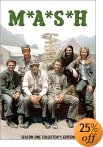 |
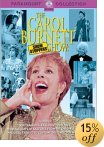
|
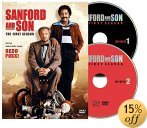 First season DVD! |
